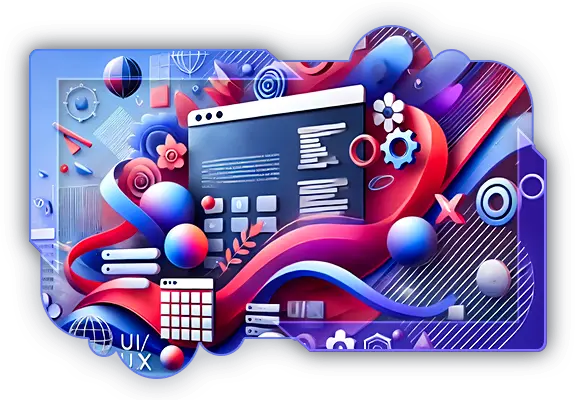
Top CSS Frameworks you should use in your projects.
When it comes to building modern, responsive, and visually appealing websites, CSS frameworks are an absolute game-changer. They save developers time, streamline the design process, and ensure consistency across projects. If you're looking for the best CSS frameworks to use in your next project, you've come to the right place. In this blog post, we'll explore some of the top CSS frameworks—Bootstrap, Materialize, Foundation, Semantic UI, and Metro—that can elevate your web development workflow. Each framework has its own strengths, and by the end of this article, you'll have a clearer idea of which one suits your needs.
Why Use a CSS Framework?
Before diving into the list, let's talk about why CSS frameworks matter. A CSS framework provides pre-designed components, grid systems, and styling rules that help developers create responsive layouts without starting from scratch. This not only speeds up development but also ensures cross-browser compatibility and better performance. Now, let's get into the details of the top CSS frameworks available today.
Bootstrap: The Most Popular Choice for Developers
Without a doubt, Bootstrap is the most widely used CSS framework in the world. Developed by Twitter, Bootstrap offers a comprehensive toolkit for building responsive and mobile-first websites. Its grid system is robust and flexible, allowing developers to create complex layouts with ease.
One of the standout features of Bootstrap is its extensive library of pre-built components. From buttons and forms to navigation bars and modals, everything is ready to use out of the box. Additionally, Bootstrap supports customization through Sass variables, enabling you to tailor the framework to match your brand identity.
If you're new to web development or need a reliable framework for quick prototyping, Bootstrap is an excellent choice. It has a massive community and plenty of tutorials, making it beginner-friendly. Visit their official website at https://getbootstrap.com/ to learn more.
Materialize: Bring Google's Material Design to Life
Next on our list is Materialize , a modern CSS framework based on Google's Material Design principles. If you love clean aesthetics, bold colors, and intuitive animations, Materialize might be perfect for your project.
This framework includes a wide range of UI components such as cards, sliders, and dropdowns, all designed according to Material Design guidelines. What sets Materialize apart is its attention to detail when it comes to user experience. For instance, the ripple effect on buttons adds a polished touch to interactions.
Another advantage of Materialize is its lightweight nature, which ensures faster load times compared to heavier frameworks. You can find documentation and download links on their official site: https://materializecss.com/ .
Foundation: The Professional's Framework
For developers who prioritize flexibility and scalability, Foundation is a top contender. Created by Zurb, Foundation is known for its advanced features and adaptability, making it ideal for large-scale projects.
Unlike other frameworks, Foundation doesn't impose strict design rules. Instead, it gives developers complete control over customizations. Its modular architecture allows you to pick and choose only the parts you need, reducing unnecessary bloat.
Foundation excels in responsiveness, offering tools like XY Grid, which provides unparalleled flexibility for creating unique layouts. Whether you're working on an e-commerce platform or a corporate website, Foundation has got you covered. Check out their resources at https://get.foundation/ .
Semantic UI: Intuitive and Human-Friendly
If readability and simplicity are important to you, take a look at Semantic UI . As the name suggests, this framework focuses on semantic HTML, meaning that class names are descriptive and easy to understand. For example, instead of cryptic classes like .btn-primary, Semantic UI uses .ui button.
The framework boasts a rich collection of themes and components, including accordions, sidebars, and popups. Its integration with third-party libraries like React and Angular makes it a versatile option for both front-end and full-stack developers.
However, keep in mind that Semantic UI may require a steeper learning curve due to its unconventional approach. Still, once mastered, it becomes a powerful tool in your arsenal. Explore more at https://semantic-ui.com/ .
Metro: A Modern Take on Minimalism
Last but not least, Metro is a lesser-known yet highly capable CSS framework inspired by Microsoft's Metro design language. Known for its sleek and minimalist aesthetic, Metro is perfect for projects aiming for a contemporary look.
What makes Metro stand out is its emphasis on typography and spacing. The framework prioritizes clarity and readability, ensuring that content remains the focal point. It also offers a variety of widgets, including calendars, charts, and progress bars, which can enhance functionality without cluttering the interface.
While Metro isn't as popular as Bootstrap or Foundation, it's worth considering if you want something fresh and distinct. Learn more about it here: https://metroui.org.ua/ .
Final Thoughts: Choosing the Right Framework
Selecting the right CSS framework depends on your project requirements and personal preferences. If you value popularity and ease of use, go for Bootstrap . For a Google-inspired design, try Materialize . Need flexibility? Foundation is your best bet. Prefer human-readable code? Choose Semantic UI . And if minimalism appeals to you, give Metro a shot.
Each of these frameworks brings something unique to the table, so experiment with them to see which aligns best with your goals. No matter which one you choose, incorporating a CSS framework into your workflow will undoubtedly boost productivity and improve the quality of your projects.



